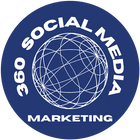The rise of online commercial technology has been seen as a threat to the prosperity and continued operations of brick-and-mortar establishments. Some people might think that with smartphones and search engines allowing customers to buy products where ever they are, why would they take the time to visit a store?
Despite what you might think, these technologies still help a small business with a physical store not just remain open, but also increase its profits.
With the right strategies, you can use Local SEO (search engine optimization) and other digital marketing techniques to increase your brick-and-mortar store’s foot traffic. Begin by seizing the right moment.
Table of Contents
Seize a Moment
Google identified four specific instances when people turn to their mobile devices and the internet for answers. These micro-moments represent a time when people are looking for a solution or an answer to a particular question. Although each moment is vital in an effective digital marketing campaign, focus on just one to draw in customers.
Online users who are in an “I want to go” moment want to know where a store is or how they can go there. This moment is represented in search terms by phrases like “near me” closest” and similar words; 82percent of smartphone users look for stores near their location. Surveys revealed that as many as 30 percent of people are using search engines to learn more about local establishments and events.
Since these users already intend to visit a store, appearing in their search engine results should be your main objective.
SEO Strategies for Increased In-Store Traffic

Search engine optimization’s primary goal is to boost your store’s online presence so that it appears on the first pageof a search engine’s results. Here are some strategies that can put your store on that coveted position and attract online users through your doors.
Identify In Different Business Categories
Appear in all search terms relevant to your business. You can achieve this by using multiple business categories that apply to your store.
For example, the search term “coffee shop”may be the main descriptor for your business, but it’s not the only one. You can use similar terms like “café,” or emphasize other services you offer. If you offer meals and sandwiches as well as coffee, you can use “restaurant,”“snack shop,” or “diner.”
Provide Specific Details for General Locations
Indexing your brick-and-mortar store’s address and location with digital databases, such as Google Maps, is vital for search engines to show users how to get to your doorstep. If your store is located within a complex or inside a mall or similar commercial space, you need to distinguish yourself from this general location.
When submitting your data to a digital database or online mapping service, don’t just write down the address of the mall or galleria. Include which floor your store is in, or if it’s in an annex or a separate building inside a larger compound.
Appear on Local Directories
Search engines prioritize sites that have multiple links that their software can trace to reliable information sources. Your physical store’s webpage will rank higher if you make profile pages for it on more than one local directory.
Some examples of location-based directories include TripAdvisor, which can direct online users as well as allow them to share experiences. An even better example would be Yelp, where users can read through customer reviews. Creating these profiles won’t just boost your search engine ranking. These profiles could also help users, who frequent these directories, to view your store.
Use Location-Based Ads
Pay-per-click advertising works by putting an ad for your business on top of a page every time a user inputs a particular search term. Instead of using generic search terms, aim to advertise on search terms that include your store’s specific location.
For example, more users might use the term“coffee shop Tucson,” but that doesn’t mean they’re actually interested in stopping at your store. But a user who types in a specific search term, like“coffee shop Mission View Tucson” or “coffee shop South Kino Parkway” could indicate a high desire to visit such a location.

